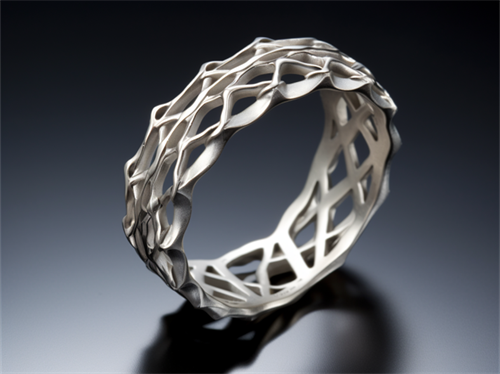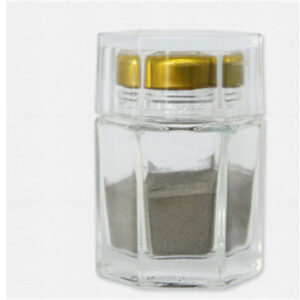Bubuk paduan logam memungkinkan pembuatan komponen berkinerja tinggi dengan menggunakan metode pengepresan dan sintering metalurgi serbuk atau metode manufaktur aditif di seluruh industri transportasi, industri, medis, dan energi. Panduan ini mencakup berbagai opsi paduan, proses produksi serbuk, spesifikasi utama, kasus penggunaan, pertimbangan kualitas, dan saran sumber.
Jenis-jenis serbuk paduan logam
Kategori umum:
| Jenis | Contoh | Properti Utama |
|---|---|---|
| Paduan Nikel | Inconel, Monel, Hastelloy | Tahan korosi, tahan panas |
| Paduan Kobalt | MP35N, Haynes 25, Stellite | Ketahanan aus, biokompatibilitas |
| Paduan Titanium | Kelas CP, Ti-6Al-4V, Ti-6Al-7Nb | Kekuatan tinggi, bobot rendah |
| Baja tahan karat | 316, 17-4PH, 15-5PH | Ketahanan korosi, kekuatan |
| Baja Perkakas | H13, M2, M4, P20 | Ketahanan aus, ketangguhan |
| Paduan Tembaga | Tembaga krom, Kuningan, Perunggu | Konduktivitas listrik & termal |
Sesuaikan sifat material paduan dengan persyaratan kinerja bagian penting seperti toleransi panas, kekerasan, masa pakai, dll. yang mendorong pemilihan tingkat bubuk.

Metode produksi bubuk logam
Proses manufaktur skala komersial utama:
- Atomisasi Gas - Gas inert bertekanan tinggi memecah aliran logam cair menjadi tetesan-tetesan halus. Menghasilkan serbuk berbentuk bola dengan sifat aliran dan pengemasan yang baik. Nozel yang berbeda menghasilkan rentang ukuran yang diinginkan.
- Atomisasi Plasma - Busur plasma energi tinggi melelehkan bahan baku. Kumparan induksi yang kuat menghasilkan tetesan yang mengeras menjadi serbuk bulat dengan distribusi partikel yang rapat.
- Elektroda Berputar - Gaya sentrifugal yang bekerja pada paduan cair yang berputar yang terkena semburan gas inert menyebabkan disintegrasi menjadi tetesan halus yang menghasilkan serbuk berbentuk bola.
- Elektrolisis - Ion logam dari larutan pelat keluar pada katoda sebagai partikel serbuk halus. Digunakan untuk bahan reaktif seperti aluminium, magnesium, titanium.
Mengontrol parameter proses seperti suhu, atmosfer, dan laju pendinginan menghasilkan bahan baku serbuk berkualitas untuk fabrikasi komponen menggunakan manufaktur aditif atau pemadatan metalurgi serbuk.
Spesifikasi Umum
| Parameter | Deskripsi | Metode pengujian |
|---|---|---|
| Kemurnian | >99%, meminimalkan kotoran | Analisis ICP |
| Bentuk partikel | Bulat> 80% | Mikroskopi |
| Distribusi Ukuran Partikel | Rentang yang ketat sesuai kebutuhan | Difraksi laser |
| Kerapatan ketukan | Tergantung bahan | Pengukur aliran aula |
| Kepadatan yang tampak | Tergantung bahan | Pycnometry |
| Laju aliran | Terstandarisasi untuk setiap ukuran nominal | Pengukur aliran aula |
| Oksida permukaan | <3000 ppm; ketebalan oksida | Fusi gas inert; XRD |
Tinjau data batch statistik dari produsen terhadap metrik khusus untuk kelas target Anda yang mengonfirmasi kualitas dan konsistensi terhadap standar.
Aplikasi
Rentang aplikasi bubuk paduan logam:
Dirgantara - Komponen mesin seperti bilah, nozel; alat kelengkapan badan pesawat, suku cadang roda pendaratan; sistem on-board
Industri - Pompa, katup, mata bor gas alam/minyak bumi; sisipan perkakas; reaktor nuklir; penukar panas
Otomotif - Komponen mesin, rotor turbocharger, roda gigi; sasis, bagian drivetrain
Medis - Implan untuk lutut, pinggul, gigi; alat bedah; instrumen pencitraan
Konsumen - Jam tangan kelas atas, peralatan olahraga seperti sepeda, tongkat golf, dan lain-lain yang membutuhkan kekuatan dan estetika
Energi - Kontak sel surya, elektroda; generator; komponen baterai; turbin angin
Memanfaatkan sifat bahan yang dapat disesuaikan dengan kebebasan desain dan presisi.
Standar Industri
Spesifikasi utama yang berlaku untuk Bubuk paduan logam:
| Standar | Deskripsi |
|---|---|
| ASTM B213 | Sistem klasifikasi standar untuk serbuk logam |
| ISO 4490 | Analisis kimia, prosedur pengambilan sampel |
| ASTM B822 | Pengukuran densitas dan laju aliran yang tampak |
| MPIF 04 | Metode statistik untuk analisis serbuk logam |
Tinjau sertifikasi yang divalidasi secara statistik yang menunjukkan kesesuaian dengan batas komposisi kelas dan konsistensi kualitas produksi relatif terhadap standar yang berlaku.
Kelas Serbuk Logam Umum
| Paduan | Nama Dagang | Spesifikasi | |
|---|---|---|---|
| Paduan Nikel | Inconel 718, 625; Hastelloy X; Monel K500 | AMS 5662, 5663 dll. | |
| Paduan Kobalt | MP35N, Haynes 25, Stellite 21 | ASTM F90, F1537 dll. | |
| Paduan Titanium | Ti-6Al-4V Grade 5; Ti-6Al-7Nb; CP Ti Grade 2 | AMS 4911, ASTM B348 dll. | |
| Baja tahan karat | SS 316L; 17-4PH; 15-5 PH; | ASTM A240, B945 dll. | |
| Baja Perkakas | H13; M2; M4; P20 + Ni | Tipe AISI | ASTM A681 |
| Paduan Tembaga | C18150, C19500, C95810 | Nomor UNS, ASTM B194, dll. |
Sesuaikan tingkat target dengan spesifikasi paduan yang berlaku yang selaras dengan kebutuhan fungsionalitas komponen jadi di seluruh parameter kekuatan, konduktivitas, dan ketahanan terhadap korosi.
Pertimbangan Kualitas
| Metrik | Tujuan | Metode pengujian |
|---|---|---|
| Komposisi | Verifikasi kemurnian kelas | Analisis ICP |
| Distribusi ukuran partikel | Kompatibilitas AM, respons sintering | Difraksi laser |
| Laju aliran aula | Kepadatan kemasan bubuk, keseragaman lapisan | Pengukur aliran aula |
| Kerapatan ketukan | Menunjukkan kepadatan bagian akhir | Menimbang volume yang diukur |
| Kepadatan yang tampak | Kepadatan sistem bubuk | Piknometri gas |
| Bentuk partikel | Sphericity mengoptimalkan properti | Mikroskopi |
| Oksida permukaan | Berdampak pada penggunaan kembali bubuk | Penganalisis fusi gas inert |
Kualitas yang konsisten di seluruh metrik ini berkorelasi langsung dengan kinerja komponen akhir yang konsisten memenuhi spesifikasi.
Pertimbangan Sumber Daya
| Parameter | Pentingnya |
|---|---|
| Lembar Data Batch | Tinggi |
| Dukungan Pengambilan Sampel | Tinggi |
| Waktu Pimpin | Sedang |
| Kustomisasi | Rendah |
| Faktor Harga | Rendah |
Cobalah sampel bubuk terlebih dulu sebelum membeli dalam jumlah besar untuk memenuhi syarat respons pencetakan atau kompresi relatif terhadap kebutuhan aplikasi.

Pertanyaan Umum
T: Apa perbedaan antara serbuk elemen yang sudah dipadukan dan yang dicampur?
J: Serbuk pra-paduan memiliki komposisi yang seragam di seluruh partikel bola. Campuran elemen campuran mungkin memiliki sedikit perbedaan komposisi di antara partikel yang dapat menciptakan ketidakhomogenan pada bagian akhir.
T: Haruskah serbuk logam disimpan dalam kondisi khusus?
J: Simpan dalam keadaan tertutup rapat dengan pengering, jauh dari kelembapan dan oksigen yang dapat menyebabkan kerusakan. Batasi variasi suhu hingga 10-30°C. Buang jika terjadi perubahan warna yang parah, penggumpalan, atau kehilangan aliran yang signifikan. Umur simpan biasanya lebih dari satu tahun jika disimpan dengan benar.
T: Apa saja campuran bubuk logam yang umum digunakan?
J: Campuran serbuk kobalt-krom, baja tahan karat-17-4PH, dan paduan nikel-baja tahan karat menawarkan cara untuk menyesuaikan sifat material komponen akhir seperti kekuatan, ketahanan aus, atau ketahanan terhadap korosi dengan biaya yang lebih rendah dibandingkan dengan tingkat kemurnian yang tinggi.
T: Tindakan pencegahan apa yang diperlukan saat menangani serbuk logam?
J: Gunakan APD yang sesuai dan hindari kontak dengan kulit atau penghirupan selama penanganan bubuk. Serbuk yang dipasivasi memiliki bahaya kesehatan yang lebih kecil dibandingkan dengan serbuk yang dikabutkan yang bisa lebih reaktif. Tinjau lembar SDS tentang protokol mudah terbakar, reaktivitas, dan paparan.




